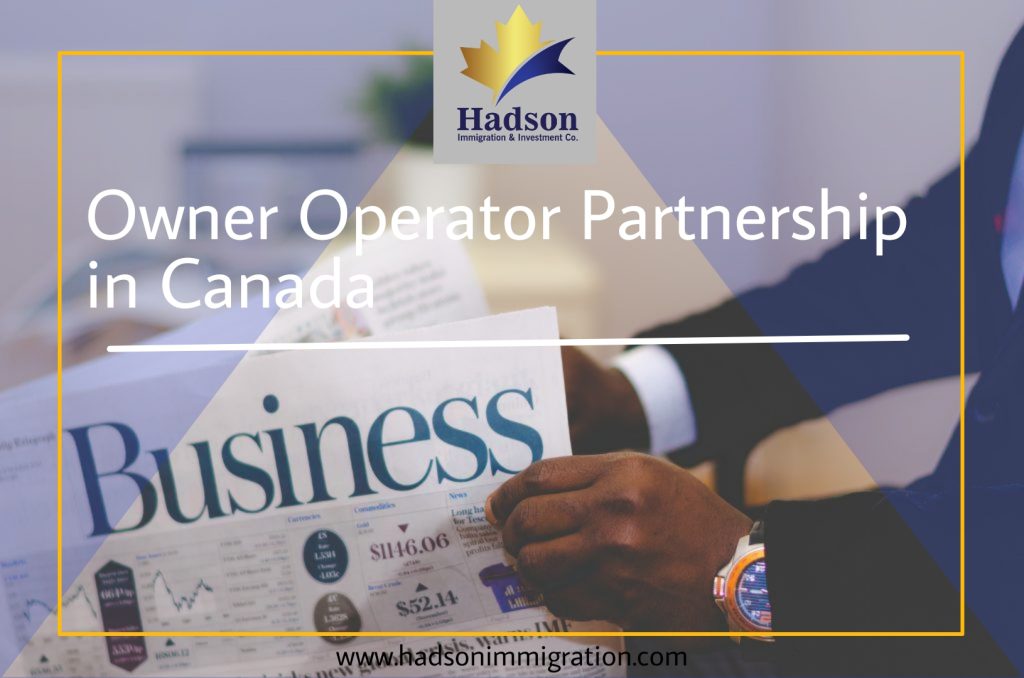Owner Operator Partnership in Canada
A corporation is a legally established business that can own assets and incur debt. It represents one of three ways of organizing a business in Canada: The other two are sole proprietorship and general partnership. Each has its own operational, accounting, tax and legal requirements.
In Canada, a corporation is created when one or more entrepreneurs register a business with a provincial or federal government through articles of incorporation—documents that describe the type of business being created, its officers, directors and bylaws. This process can be complex and should be done with the advice of an accountant and a corporate lawyer.
Corporations are considered legally separate from their owners. Because it is defined by law, a corporation is an impersonal entity that can in theory exist forever. This means that if the owner dies, the company can continue without issue—unlike in partnerships or sole proprietorships where company assets can be tied up because of estate or taxation issues.
General Owner Partnership
A general partnership is a business established by two or more owners. It is one of three ways of organizing a business in Canada. The other two are: Sole proprietorship and incorporation. Each of these has its own operational, accounting, tax and legal requirements.
General partnerships are relatively simple and inexpensive to form––there are no formal legal requirements. All the company needs is a registered trade name, a registered tax number for applicable taxes and a bank account. Usually, the owners will work out a partnership agreement that outlines their respective powers, ownership share and capital contribution as well as the profit distribution and operating procedures for the business. Entrepreneurs can find free partnership agreement templates online.
The owners or partners can individually bind the partnership with assets and obligations, so it is important to choose partners that fit with the organization, its goals and values.
More about general partnerships
General partnership is more complex than sole proprietorship, but less complex than incorporation. Its basic features are as follows:
Features | Pros and cons |
|---|---|
| Operations General partnership includes joint ownership with some formalities and moderate administration expenses. The owners pool their funds to raise capital. | Decision-making can be cumbersome, with important decisions made by voting among partners. Smaller decisions may be made individually as long as others are informed. |
| Accounting Revenues, expenses and cash flow management are all tracked internally with additional outside support from other professional accountants. | Public reporting is not required, but general purpose financial information is needed to run the company and satisfy bankers, vendors, tax collectors, etc. |
| Taxation Each partner is taxed personally on his or her share of partnership income, so a tax return for the general partnership itself is not required. | There are limits to what expenses can be deducted. Taxable income is subject to individual personal tax rates. |
| Legal Each partner is liable for all assets and liabilities of the partnership. | If the company is sued, each partner’s personal assets can be seized to settle the claims. |
About the Owner-Operator LMIA Work Permit
The owner-operator work permit route is a two-step program where an initial work permit serves as the platform to become a permanent resident of Canada. The Owner-Operator LMIA route involves the following steps.
Buy an existing Canadian business or setup up a new business in Canada.
Create a job position for yourself as an employee of the business and apply for the Owner-Operator LMIA
Get a work permit and start working for your own business as its employee
Apply through Express Entry and become a permanent resident of Canada.
Sole proprietorship
A sole proprietorship is a business with a single owner who alone is responsible for all liabilities—legal debts a company owes to third-party creditors. Sole proprietorship is one of three ways of organizing a business in Canada: The other two are general partnership and incorporation. Each has its own operational, accounting, tax and legal requirements.
Sole proprietorship is the simplest of the three ways of organizing a business. All it requires is for the business owner to:
Register a trade name
Obtain a tax number
Open a bank account
Qualifying as an Owner-Operator
The owner-operator route is not open to every foreigner interested in investing in a business in Canada. To qualify as an owner/operator, you must fulfill important requirements related to business control and benefit to Canada through job creation or skill transfer.
Business Control
You must have controlling interest in the business for which you wish to become an owner-operator. This means you must either be the sole owner or have a majority equity stake if the business is a partnership or company.
The simplest indicator of business control is whether you can be fired from your position in the business. If you have control of the business, then this obviously won’t be possible.
Benefit to Canada—Job Creation or Skill Transfer
Merely buying a business and appointing yourself as its employee won’t qualify you as an owner-operator. A very important parameter is whether your presence in Canada and participation in the business will create or retain jobs for Canadians or result in transfer of skills or knowledge to Canadians.
Active Participation in Management of the Business
The owner-operator work permit differs from a passive investment immigration program because the applicant must actively participate in the management of the business.
You must have a strong business experience and have a good track record of creating and sustaining successful businesses. You must create a detailed business plan for the business and must play a key role in executing it in Canada.
Authorities will also analyze your business plan to assess its viability and to verify your business expertise and the extent of control you have over the business or venture to assess whether you fulfill the requirement of actively managing the business.
Owner-Operator Work Permit Based on a Labour Market Impact Assessment
To qualify for an Owner-Operator work permit based on a LMIA, a foreign national must demonstrate that they:
Own at least 50% of the business and hold a position where they cannot be terminated;
Will have a wage that is equal or greater than the median wage for the position;
Will operate a business that will result in the creation or retention of employment opportunities for Canadians or permanent residents, or that it will provide the transfer of skills or knowledge to Canadians or permanent residents;
Have a viable business plan and have taken measures to put their business plan in place – such as financing, leasing office space, and obtaining a business number with Canada Revenue Agency
Have a skill set or experience that will improve the feasibility of the business; and
Will hire at least one Canadian or permanent resident in the first year of operating or opening the business in Canada.
Other Considerations
If a foreign national owns less than 50% of the company, it is recommended that they obtain a LMIA as an employee of the company. In addition, if there are multiple owners of the business, only one owner will be allowed to obtain an Owner-Operator work permit.
A foreign national applying for an Owner-Operator work permit can have the dual intent of coming to Canada for a temporary basis (to operate a business), as well as to eventually immigrate to Canada and become a permanent resident. If a foreign national does have this dual intent, they will have to demonstrate to the officer reviewing the work permit application that they are willing to leave Canada at the end of their temporary stay, if required to do so.







